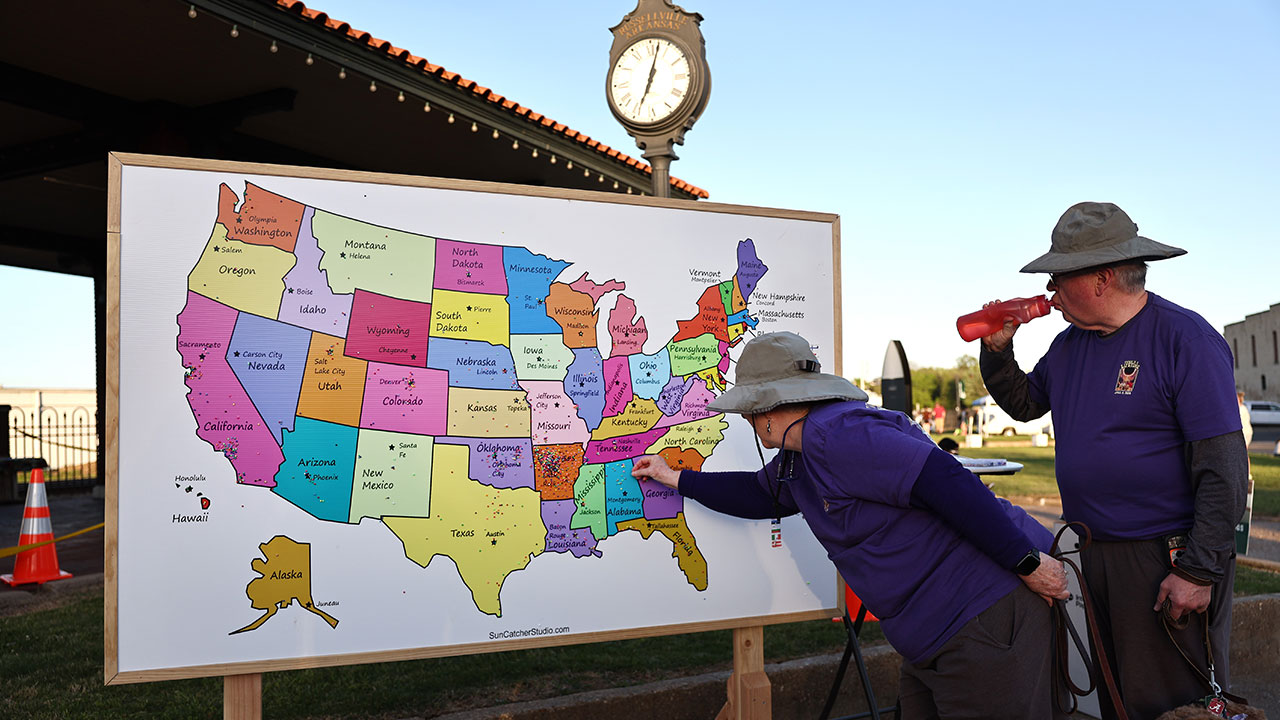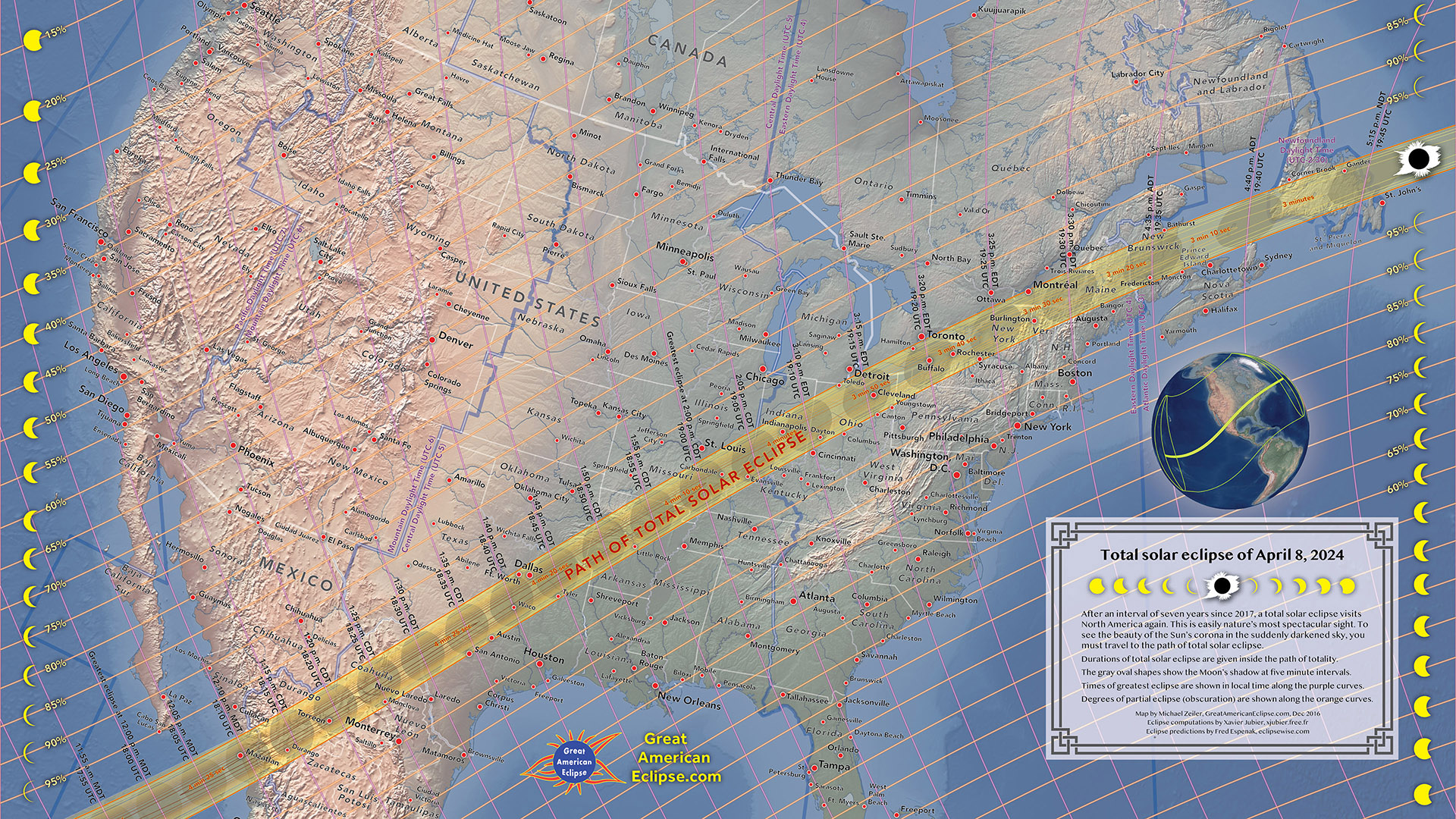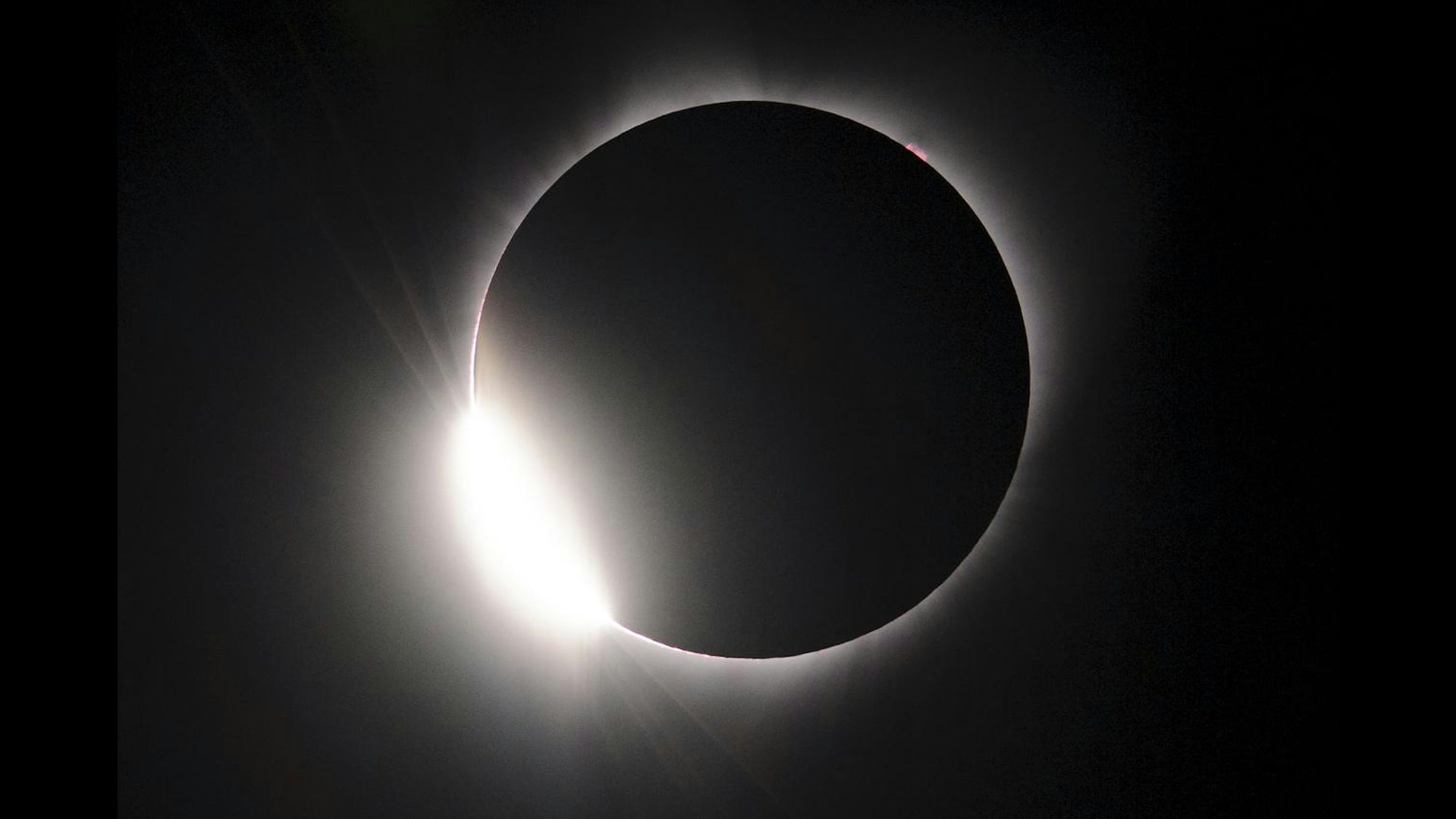April 8 solar eclipse: What time does totality start in every state?
Totality, the moment when the moon completely covers the sun's face, is the climax of a total solar eclipse. Here's what time totality starts in all 13 states where the total solar eclipse will be visible on April 8, and what to expect when the big moment arrives.

The long wait is over. Hopefully by now you have found your seat to watch the great celestial event, set up your telescope and are ready to enjoy today's total solar eclipse that will bring eerie darkness to a long swath of the United States, Canada and Mexico during the few moments when the moon covers the sun's face completely. The only thing you need to know now is when exactly totality will begin wherever you are.
Totality is a completely different experience from 99% eclipse coverage. First and foremost, totality is the only safe time to look directly at the sun without solar eclipse glasses or other certified eye protection. But viewers within the path of totality will also have the chance to view a host of unique eclipse phenomena.
Only during totality do the skies turn twilight-dark, and only during totality is the sun's outer atmosphere, or corona, visible as wispy projections of light emanating from behind the moon. Being inside the path of totality is also the only way to see eclipse features such as Baily's beads, which are the last rays of light sneaking past the mountains on the moon.
Totality occurs in a 115-mile-wide (185 kilometers) stretch from Mexico to Canada, crossing 15 US states (although two states, Tennessee and Michigan, will only be barely glanced by the moon's shadow). In the US, totality will begin in Texas at 1:27 pm CDT and will end in Maine at 3:35 pm EDT.
The duration of totality depends on how close you are to the center of the path, and how far southwest you are. The maximum duration of totality for the April 8 eclipse is 4 minutes, 27 seconds in Torreón, Mexico.

What time is the eclipse?
Here's a detailed breakdown of what time totality starts and stops in each state it passes through, according to NASA.
Note: The partial phases of the eclipse last about an hour and 20 minutes before and after totality, and will be visible to some extent across the entire United States. Here's how to safely enjoy the partial eclipse on April 8.
Get the world’s most fascinating discoveries delivered straight to your inbox.
| City | Totality begins | Totality ends |
| Dallas, Texas | 1:40 p.m. CDT | 1:44 p.m. CDT |
| Idabel, Oklahoma | 1:45 p.m. CDT | 1:49 p.m. CDT |
| Little Rock, Arkansas | 1:51 p.m. CDT | 1:54 p.m. CDT |
| Poplar Bluff, Missouri | 1:56 p.m. CDT | 2:00 p.m. CDT |
| Paducah, Kentucky | 2:00 p.m. CDT | 2:02 p.m. CDT |
| Carbondale, Illinois | 1:59 p.m. CDT | 2:03 p.m. CDT |
| Evansville, Indiana | 2:02 p.m. CDT | 2:025 p.m. CDT |
| Cleveland, Ohio | 3:13 p.m. EDT | 3:17 p.m. EDT |
| Erie, Pennsylvania | 3:16 p.m. EDT | 3:20 p.m. EDT |
| Buffalo, New York | 3:18 p.m. EDT | 3:22 p.m. EDT |
| Burlington, Vermont | 3:26 p.m. EDT | 3:29 p.m EDT |
| Lancaster, New Hampshire | 3:27 p.m EDT | 3:30 p.m. EDT |
| Caribou, Maine | 3:32 p.m. EDT | 3:34 p.m. EDT |
To learn more about the eclipse's timing in your exact location, visit NASA's 2024 eclipse information page.
What to expect during totality
The path of totality is the path of the moon's shadow across the Earth. By viewing the eclipse from within the path of totality, you may be able to see a whole host of unual phenomena associated with the shadow's passage (depending on how cloudy the skies are overhead).
As the moon's shadow approaches, there will be a noticeable drop in temperature, usually between 5 to 10 degrees Fahrenheit (2.8 to 5.6 degrees Celsius). As the ground cools, low-level clouds may also disappear, helping a bit with the view overhead.
About 30 seconds before totality, wavy lines known as shadow bands may appear on the sides of buildings and vehicles. Just a few seconds before totality, you may be able to see Bailey's beads appear around the edge of the moon.
If the skies are relatively clear, totality will bring a wall of darkness that turns midday to twilight. (This is the only time when it's safe to remove your solar eclipse glasses.) When darkness descends, bright stars and planets may be visible in the sky, while a 360-degree sunset may appear on the horizon. Animals may start to act strangely, growing eerily quiet and potentially showing their nighttime behaviors. Colors around you will look different, with greens and blues popping while reds appear dimmer. When the sun is fully eclipsed, its corona will be clearly visible behind the moon.
Enjoy this moment, whatever it brings, as the next eclipse over the contiguous United States isn't until 2044.

Stephanie Pappas is a contributing writer for Live Science, covering topics ranging from geoscience to archaeology to the human brain and behavior. She was previously a senior writer for Live Science but is now a freelancer based in Denver, Colorado, and regularly contributes to Scientific American and The Monitor, the monthly magazine of the American Psychological Association. Stephanie received a bachelor's degree in psychology from the University of South Carolina and a graduate certificate in science communication from the University of California, Santa Cruz.



